
Many parts of the body become smaller when excess weight is lost, and this is also true of the feet. It is beneficial to have the feet properly measured when purchasing new shoes, and this will help to ensure a good fit. Research has indicated the feet absorb approximately 120 percent of the body’s weight, and this may explain why foot pain may occur. The excess weight may stretch tissues and muscles, in addition to natural fad pads wearing down. Additionally, the feet and ankles may swell from the added weight, and may generally feel uncomfortable. Many patients have noticed that by losing weight, their feet will feel better, and existing foot conditions may be alleviated. The bone structure of the foot may not change, but the width may be affected, and become smaller. It is beneficial to exercise as often as possible, and this can help the health of the feet. Eating foods that are low in sodium can help to diminish existing swelling, and wearing shoes may become easier. If you have questions about foot health before or after weight is lost, please consult with a podiatrist who can address any concerns you may have.
Obesity has become very problematic at this point in time and can have extremely negative effects on the feet. If you’re an obese individual and are concerned about your feet, contact one of our podiatrists from Lovely Foot Associates, PC. Our doctors can provide the care you need to keep you pain-free and on your feet.
Obesity and Your Feet
Since your feet are what support your entire weight when standing, any additional weight can result in pain and swelling. Being overweight is one of the main contributors to foot complications.
Problems & Complications
Extra Weight – Even putting on just a few extra pounds could create serious complications for your feet. As your weight increases, your balance and body will shift, creating new stresses on your feet. This uneven weight distribution can cause pain, even while doing the simplest tasks, such as walking.
Diabetes – People who are overweight are at serious risk of developing type-2 diabetes, which has a drastic impact on the health of your feet. As you get older, your diabetes might worsen, which could lead to loss of feeling in your feet, sores, and bruises. You could also become more prone to various infections.
Plantar fasciitis – Pressure and stress that is placed on muscles, joints, and tendons can trigger plantar fasciitis, which is an inflammation of tissue that forms along the bottom of the foot.
If you have any questions please feel free to contact our office located in Johnstown, PA . We offer the newest diagnostic and treatment technologies for all your foot and ankle needs.

Almost everyone experiences foot pain at some point. Barring traumatic injury, the most common causes of foot pain are bunions, plantar fasciitis, ingrown toenails, and athlete’s foot. A bunion is a bony protrusion at the base of the big toe, often caused by genetics and made worse from arthritis. Improper footwear can aggravate a bunion, which then may cause hammertoes, calluses, and metatarsal pain. Plantar fasciitis is an inflammation of the band of tissue that runs along the sole of the foot. While painful, it can be alleviated to a degree by wearing shoes with more cushioning and by doing certain exercises. Ingrown toenails can be quite painful, but they may be prevented by keeping toenails properly cut and wearing shoes with more room in the toe box. Athlete’s foot is a fungal infection that enters the foot through a tiny crack or sore. It causes itching, scaling and painful splitting of the skin between the toes. Highly contagious, athlete’s foot is often spread in moist, warm areas, including shower rooms and swimming pools. If you have any of these conditions, it is a good idea to check in with a podiatrist for a full examination, diagnosis, and options for treatment.
Foot Pain
Foot pain can be extremely painful and debilitating. If you have a foot pain, consult with one of our podiatrists from Lovely Foot Associates, PC. Our doctors will assess your condition and provide you with quality foot and ankle treatment.
Causes
Foot pain is a very broad condition that could be caused by one or more ailments. The most common include:
Diagnosis
To figure out the cause of foot pain, podiatrists utilize several different methods. This can range from simple visual inspections and sensation tests to X-rays and MRI scans. Prior medical history, family medical history, and any recent physical traumatic events will all be taken into consideration for a proper diagnosis.
Treatment
Treatment depends upon the cause of the foot pain. Whether it is resting, staying off the foot, or having surgery; podiatrists have a number of treatment options available for foot pain.
If you have any questions, please feel free to contact our office located in Johnstown, PA . We offer the newest diagnostic and treatment technologies for all your foot care needs.
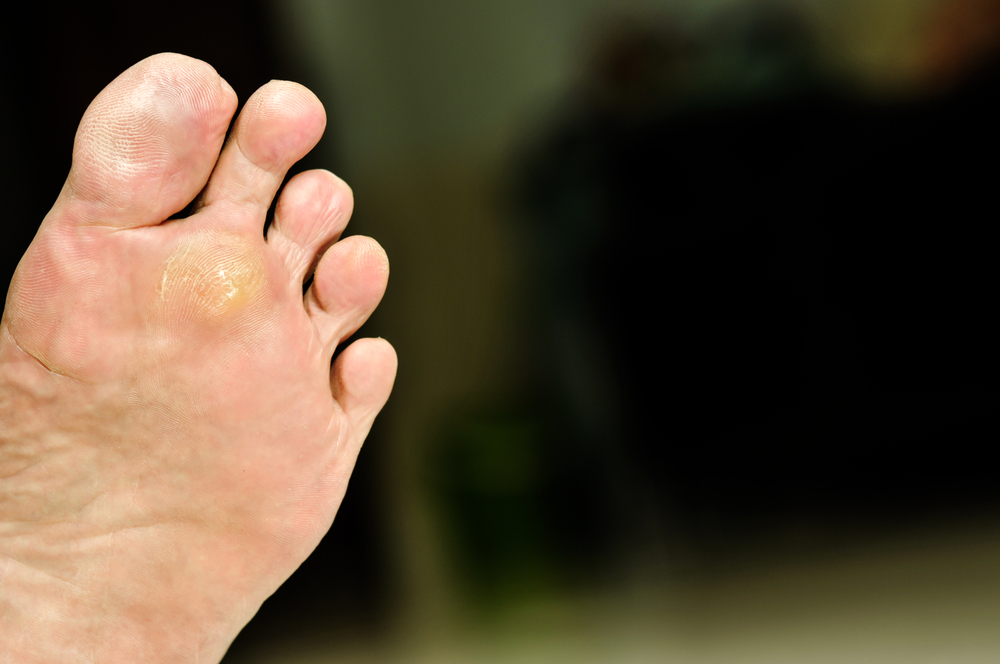
Plantar warts are caused by the human papillomavirus (HPV), and they typically develop on the bottoms of the feet, usually on the balls or heels. These warts can, unfortunately, be particularly painful for some individuals when they walk or put weight on their feet. Since plantar warts are located on the bottoms of the feet, they may essentially grow inward in response to the pressure that is put on the soles of the feet. Plantar warts have a pernicious ability to spread to other parts of the feet and body sometimes very easily. For example, you might unknowingly be spreading your plantar warts if you touch the wart and then immediately touch another part of your body. Additionally, you may be spreading your plantar warts to other people if you share personal self-care tools such as razors or towels. It is not beneficial to your health if your plantar warts begin to spread. If this happens, a medical professional might advise you to use over-the-counter medications to address the problem. If you have plantar warts, you ought to contact a podiatrist especially if you notice that they are beginning to spread. A podiatrist is a foot specialist who can help you take specific steps to identify and address the problem.
Plantar warts can be very uncomfortable. If you need your feet checked, contact one of our podiatrists from Lovely Foot Associates, PC. Our doctors will assist you with all of your foot and ankle needs.
About Plantar Warts
Plantar warts are the result of HPV, or human papillomavirus, getting into open wounds on the feet. They are mostly found on the heels or balls of the feet.
While plantar warts are generally harmless, those experiencing excessive pain or those suffering from diabetes or a compromised immune system require immediate medical care. Plantar warts are easily diagnosed, usually through scraping off a bit of rough skin or by getting a biopsy.
Symptoms
Treatment
To help prevent developing plantar warts, avoid walking barefoot over abrasive surfaces that can cause cuts or wounds for HPV to get into. Avoiding direct contact with other warts, as well as not picking or rubbing existing warts, can help prevent the further spread of plantar warts. However, if you think you have developed plantar warts, speak to your podiatrist. He or she can diagnose the warts on your feet and recommend the appropriate treatment options.
If you have any questions please feel free to contact our office located in Johnstown, PA . We offer the newest diagnostic and treatment technologies for all your foot and ankle needs.
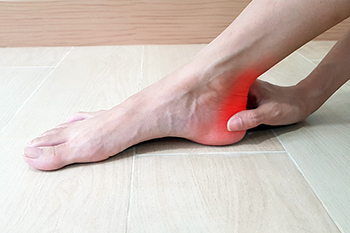
The Achilles tendon is defined as the tendon in the calf which connects the calf muscles to the heel. People who frequently participate in sporting activities may experience an Achilles tendon injury, and this can be common among runners. It is considered to be the strongest tendon in the body, and can become painful if an injury has occurred. Some of the symptoms that patients may have can include severe heel pain, the affected area can be tender when touched, and the back of the ankle may be swollen. If the Achilles tendon is affected during a foot injury, the patient may hear a popping sound at the time of the mishap, and there is often immediate pain. This tendon can become weakened from overuse, and this may be a result of repeated stress that happens gradually. Additionally, this type of injury may occur from wearing shoes that do not fit correctly, and increasing the intensity and speed of the chosen exercise too soon. If you have endured an Achilles tendon injury, it is strongly advised that you are under the care of a podiatrist who can diagnose it correctly, and offer prompt treatment.
Achilles tendon injuries need immediate attention to avoid future complications. If you have any concerns, contact one of our podiatrists of Lovely Foot Associates, PC. Our doctors can provide the care you need to keep you pain-free and on your feet.
What Is the Achilles Tendon?
The Achilles tendon is a tendon that connects the lower leg muscles and calf to the heel of the foot. It is the strongest tendon in the human body and is essential for making movement possible. Because this tendon is such an integral part of the body, any injuries to it can create immense difficulties and should immediately be presented to a doctor.
What Are the Symptoms of an Achilles Tendon Injury?
There are various types of injuries that can affect the Achilles tendon. The two most common injuries are Achilles tendinitis and ruptures of the tendon.
Achilles Tendinitis Symptoms
Rupture Symptoms
Treatment and Prevention
Achilles tendon injuries are diagnosed by a thorough physical evaluation, which can include an MRI. Treatment involves rest, physical therapy, and in some cases, surgery. However, various preventative measures can be taken to avoid these injuries, such as:
If you have any questions please feel free to contact our office located in Johnstown, PA . We offer the newest diagnostic tools and technology to treat your foot and ankle needs.
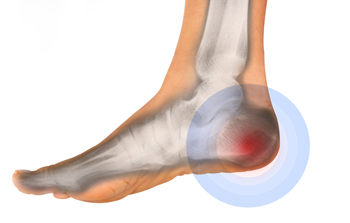
There are many different causes of heel pain. One potential cause of your heel pain is known as a bruised heel. This condition essentially targets the skin and fat cushioning that protects the heel bone. Bruised heels can result from trauma that happens slowly over time, such as the repeated and sustained impact on the heel from running or jumping. However, bruised heels can also come about in response to a one-time traumatic injury. The most noticeable and prominent symptom of this condition is pain at the bottom of the heel bone, also known as the calcaneus. Importantly, the pain that is felt from a bruised heel is typically not as long-lasting as that felt from plantar fasciitis. Another symptom of bruised heels is a purple or red color on the heel. This discoloration is a sign of a bruise and results from bleeding that is happening underneath the skin. There are a variety of risk factors that can increase your likelihood of developing a bruised heel. For example, if you are significantly overweight or you run barefoot, then you might be more susceptible to developing a bruised heel. If you think that you may be suffering from this condition, reach out to a podiatrist who can help with treatment options.
Many people suffer from bouts of heel pain. For more information, contact one of our podiatrists of Lovely Foot Associates, PC. Our doctors can provide the care you need to keep you pain-free and on your feet.
Causes of Heel Pain
Heel pain is often associated with plantar fasciitis. The plantar fascia is a band of tissues that extends along the bottom of the foot. A rip or tear in this ligament can cause inflammation of the tissue.
Achilles tendonitis is another cause of heel pain. Inflammation of the Achilles tendon will cause pain from fractures and muscle tearing. Lack of flexibility is also another symptom.
Heel spurs are another cause of pain. When the tissues of the plantar fascia undergo a great deal of stress, it can lead to ligament separation from the heel bone, causing heel spurs.
Why Might Heel Pain Occur?
Treatments
Heel pain should be treated as soon as possible for immediate results. Keeping your feet in a stress-free environment will help. If you suffer from Achilles tendonitis or plantar fasciitis, applying ice will reduce the swelling. Stretching before an exercise like running will help the muscles. Using all these tips will help make heel pain a condition of the past.
If you have any questions please contact our office located in Johnstown, PA . We offer the newest diagnostic and treatment technologies for all your foot and ankle needs.
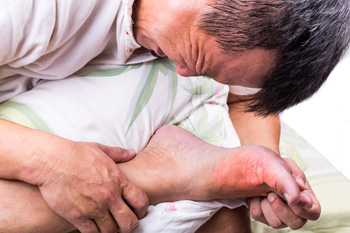
Gout is a type of arthritis that presents sudden episodes of severe pain and swelling in the joints, often in the big toe. Range of motion in the big toe may become limited. Those with gout frequently experience flare-ups at night. Gout is the result of uric acid accumulating in the blood from purines in food, which triggers a buildup of crystals in joints. Diets rich in purines can lead to gout flares. There is uric acid medicine for this condition. However, it is best to manage symptoms through following a purine-restricted diet. Foods that are high in purines include shellfish, veal, venison, liver and other organ meats, alcoholic beverages – especially beer, kidney beans, lentils, and spinach. Those with gout should limit protein consumption overall and try to include plant-based sources of protein in their diets. If you experience periodic pain in your big toe and think you might have gout, consult with a podiatrist who can help you better understand and manage this condition.
Gout is a foot condition that requires certain treatment and care. If you are seeking treatment, contact one of our podiatrists from Lovely Foot Associates, PC. Our doctors will treat your foot and ankle needs.
What Is Gout?
Gout is a type of arthritis caused by a buildup of uric acid in the bloodstream. It often develops in the foot, especially the big toe area, although it can manifest in other parts of the body as well. Gout can make walking and standing very painful and is especially common in diabetics and the obese.
People typically get gout because of a poor diet. Genetic predisposition is also a factor. The children of parents who have had gout frequently have a chance of developing it themselves.
Gout can easily be identified by redness and inflammation of the big toe and the surrounding areas of the foot. Other symptoms include extreme fatigue, joint pain, and running high fevers. Sometimes corticosteroid drugs can be prescribed to treat gout, but the best way to combat this disease is to get more exercise and eat a better diet.
If you have any questions please feel free to contact our office located in Johnstown, PA . We offer the newest diagnostic and treatment technologies for all your foot and ankle needs.
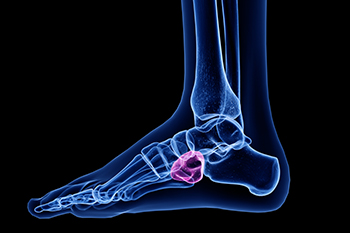
There are a number of foot afflictions that can occur when a bone in the foot, no matter how small, dislocates from its proper place. Cuboid syndrome is one such condition. Cuboid syndrome occurs when the cuboid bone, located in front of the ankle, dislocates randomly or in response to some kind of injury. If you have cuboid syndrome, you might experience pain, particularly when participating in weight-bearing activities. Additionally, you might find yourself turning your feet inward when walking if you are suffering from cuboid syndrome. There are several ways in which cuboid syndrome can be treated. Commonly, the cuboid bone can be manipulated back in place by a medical professional. The medical professional might then use tape and custom orthotics to keep the cuboid bone in its proper place. Also, the effects of cuboid syndrome can be addressed with specific massages. For example, deep tissue massages that target the calf muscles can be used on patients to calm the peroneal muscle. As a result, the amount of pressure that your feet place on the cuboid bones can be reduced. If you believe that you might have cuboid syndrome, it is a good idea to reach out to a podiatrist who can help you tackle the problem.
Cuboid syndrome, also known as cuboid subluxation, occurs when the joints and ligaments near the cuboid bone in the foot become torn. If you have cuboid syndrome, consult with one of our podiatrists from Lovely Foot Associates, PC. Our doctors will assess your condition and provide you with quality foot and ankle treatment.
Cuboid syndrome is a common cause of lateral foot pain, which is pain on the outside of the foot. The condition may happen suddenly due to an ankle sprain, or it may develop slowly overtime from repetitive tension through the bone and surrounding structures.
Causes
The most common causes of cuboid syndrome include:
Symptoms
A common symptom of cuboid syndrome is pain along the outside of the foot which can be felt in the ankle and toes. This pain may create walking difficulties and may cause those with the condition to walk with a limp.
Diagnosis
Diagnosis of cuboid syndrome is often difficult, and it is often misdiagnosed. X-rays, MRIs and CT scans often fail to properly show the cuboid subluxation. Although there isn’t a specific test used to diagnose cuboid syndrome, your podiatrist will usually check if pain is felt while pressing firmly on the cuboid bone of your foot.
Treatment
Just as the range of causes varies widely, so do treatments. Some more common treatments are ice therapy, rest, exercise, taping, and orthotics.
If you have any questions, please feel free to contact our office located in Johnstown, PA . We offer the newest diagnostic and treatment technologies for all your foot care needs.
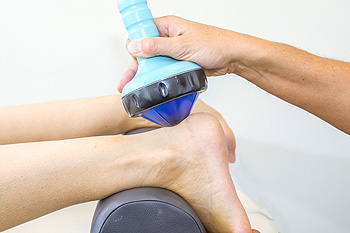
There are many tools at a podiatrist’s disposal to address any number of challenging foot afflictions. Podiatrists may prescribe antibiotics, recommend orthotics, or encourage a surgical procedure in extreme cases. One interesting tool that podiatrists can use is known as shockwave therapy for the feet. This new method can be used to treat plantar fasciitis, one of the most common foot conditions affecting individuals across the country. The shockwave therapy treatment consists of applying bursts of air and electromagnetic shock pulses to the lower limbs in either low or high energy increments. The purpose of this is to facilitate a kind of natural healing response in the feet. That is, the shockwave therapy is meant to encourage the formation of blood vessels in the affected areas and other healing nutrients. If you have plantar fasciitis and believe that you might be interested in addressing it through shockwave therapy, contact a podiatrist who may be able to help.
Shockwave therapy is a treatment commonly used to treat various injuries and conditions, particularly plantar fasciitis in the feet. To learn more, consult with one of our podiatrists from Lovely Foot Associates, PC. Our doctors can provide the care you need to keep you pain-free and on your feet.
Shockwave Therapy
Shockwave therapy is a new treatment option designed to treat bone conditions such as tennis elbow, shoulder pain, and others. Shockwave therapy uses high intensity sound waves that are directed to the affected tissues of the body with pinpoint accuracy. The effects are very beneficial, leading to a production of collagen fibers, eliminating inflammation.
Who Benefits from Shockwave?
Shockwave is recommended for patients suffering from heel pain and associated problems. Heel pain is a common condition which can be caused by obesity, overexertion, and spending a substantial amount of time on hard floors with your feet exposed and unsupported.
Fast and Easy
The therapy is actually a simple process that can leave patients feeling better the very next day. Shockwave therapy is not as dramatic as it sounds. It enables more blood flow to effected areas, addressing the source of the problem and allowing treatment to last for a long time.
Treatment & Recovery Time
Shockwave treatment will enable your feet to recover quickly. This is especially important since surgery is not required. It is cost effective and does not require the use of anesthesia. This treatment is a better option to surgery, since it is proven safe.
If you have any questions, please feel free to contact our office located in Johnstown, PA . We offer the newest diagnostic and treatment technologies for all your foot and ankle needs.